Our new HQ
Welcome to the ancestral futureWhat does the office of an ancestral neurotechnology company look like? This is a question we've been asking ourselves for a long time. What kind of environment do we want to spend our days in? What architectural and aesthetic and sensory elements will help us advance our work? What should we build from? If we are teaching outside, by design, where should we work? What is a shelter? What is an office?
The Break Room
test.
Invest in you.
Find yourself here.
Here is the pathway to joining a cohort or facilitating
2)
SECOND
Have you done the first thing? Good. No? Do the first thing. After your introduction, apply to join a cohort.
AT THE PRESENT TIME WE ARE ACCEPTING APPLICATIONS FOR COHORTS 4 and 5, BEGINNING IN SEPTEMBER OF 2020. For those in the Bay Area, we are hoping to offer a socially-distant face-to-face cohort. For all others, the cohort will be remote.
3)
THIRD
If your aspiration is to teach with us, or to bring the model to your clinic or healthcare setting, you'll need a site that meets the requirements, and two certified facilitators. All facilitators begin by participating in a cohort. All cohorts begin with an introduction. Those are the pre-requisites. So, first do FIRST, then SECOND. On your introductory call, make sure you let the facilitator know (they will ask) that you are interested in becoming certified, or bringing the model to your clinic or healthcare setting.
The Restorative Practices cohort model costs $4200 to change your mind.
Consider it an investment in the future, and in your future. Generally, folks pay for this monthly over 12 months. For six months, you will be enrolled in twice-monthly facilitated group sessions. After that time, group members will have the option to continue in peer-based meetings. (Every one of our previously enrolled cohorts has decided, of their own accord, to do this.) You will continue to have access to the learning platform for one year. At the end of a year, you can continue membership in the learning platform at an alumni rate of $87/month, though you will have access to the entire platform including all films in the Restorative Practices series (the $99/month membership only has access to 4 films). You can also, with facilitator permission, attend additional cohorts as long as your alumni membership is active (that's 75% OFF). In our first two Bay area cohorts, 90% of participants wanted to repeat the course.
Because we are a social justice organization, with a triple bottom line, we don't want finances to stop you from participating in the model. If you need to do this (you'll know), and money is an issue, let us know. We have work study/ trade options, and limited scholarships. In scholarships, we prioritize People of Color, Indigenous people, women, and members of other socially-marginalized groups. Someday we hope to have the resources to pay under-resources folks to participate in our groups. We know that when people have access to tools of self-care, self-awareness, and supportive community they are happier, healthier, and more productive, and that in addition to helping people access these resources because it is the right thing to do, this lowers all of our collective costs because healthy, happy people are less likely to get sick and less likely to harm others. Isn't that kind of obvious?
Here's what comes with joining a cohort
ACCESS TO THE COMPLETE FILM SERIES
10 films
Film One- Turning on the Connection System
Film Two- The State of the Union
Film Three- The Science of Safety (Polyvagal Theory)
Film Four- Heartfulness
Film 5- Universal Language
Film 6- Ancestral Nature Connection
Film 7- Healthy Relationships
Film 8- The Space Between Us
Film 9- An Unfinished Conversation About Race
Film 10- The Faces We Fear
The film series is hosted and directed by Restorative Practices Alliance founder Gabriel Kram, featuring the work of
-
Dr. Nadine Burke Harris MD MPH FAAP, First Surgeon General of California
-
Dr. Vincent Felitti, MD- Co-Principal Investigator of the ACES study (Adverse Childhood Experiences), the largest epidemiological study of trauma ever conducted
-
Dr. Stephen Porges PhD, Creator of the Polyvagal Theory
-
Dr. Darcia Narvaez PhD, author of Neurobiology and the Development of Human Morality
-
Lee Mun Wah, award-winning documentary film-maker of The Color of Fear, and master mindfulness and diversity trainer
-
John Stokes, founder of The Tracking Project
-
Jon Young, founder of 8 Shields and author of What the Robin Knows: How Birds Reveal the Secrets of the Natural World
-
Earl Simms, Violence Prevention expert and Regional Director of Timelist
Tailored practices for your particular needs
Our proprietary Assessment is designed to measure the stability and strength of your Connection System, which is the physiological basis of wellbeing and resilience, and identify patterns of disconnection and dysregulated autonomic nervous system states. It is not a diagnostic examination, but rather an invitation to explore your own sense of awareness and connection. This assessment compiles information informed by several other psychometric instruments including Dr. Stephen Porges PhDs (our advisor) Body Perception Questionnaire, Dr. Vincent Felitti MD (our mentor) Adverse Chilhood Experiences (ACES) questionnaire, Dr. David Black PhDs Applied Mindfulness Process scale, and Dr Beth Hudnall Stamm, PhDs Professional Quality of Life scale (ProQOL).
Based on your answers to the connection assessment, we can identify particular restorative tools and practices from our database of 350+ that are most likely to be most supportive to your wellbeing. These might be internal practices: meditative, somatic, emotional, movement, sensory, kinesthetic. They might be relational practices: communication, listening, relating across differences, council, etc. They might be nature-based: tracking, learning bird language (yes, that’s a real thing and most wild animals understand it except you), forest bathing, surfing, etc. We’ll also recommend practices that address the particular ways your nervous system gets out of balance when it does…do you tend to get confrontational and combative when stressed? Anxious? Paralyzed and overwhelmed? Each of these responses indicates that something different is happening in your threat response system, and each has different antidotes.


